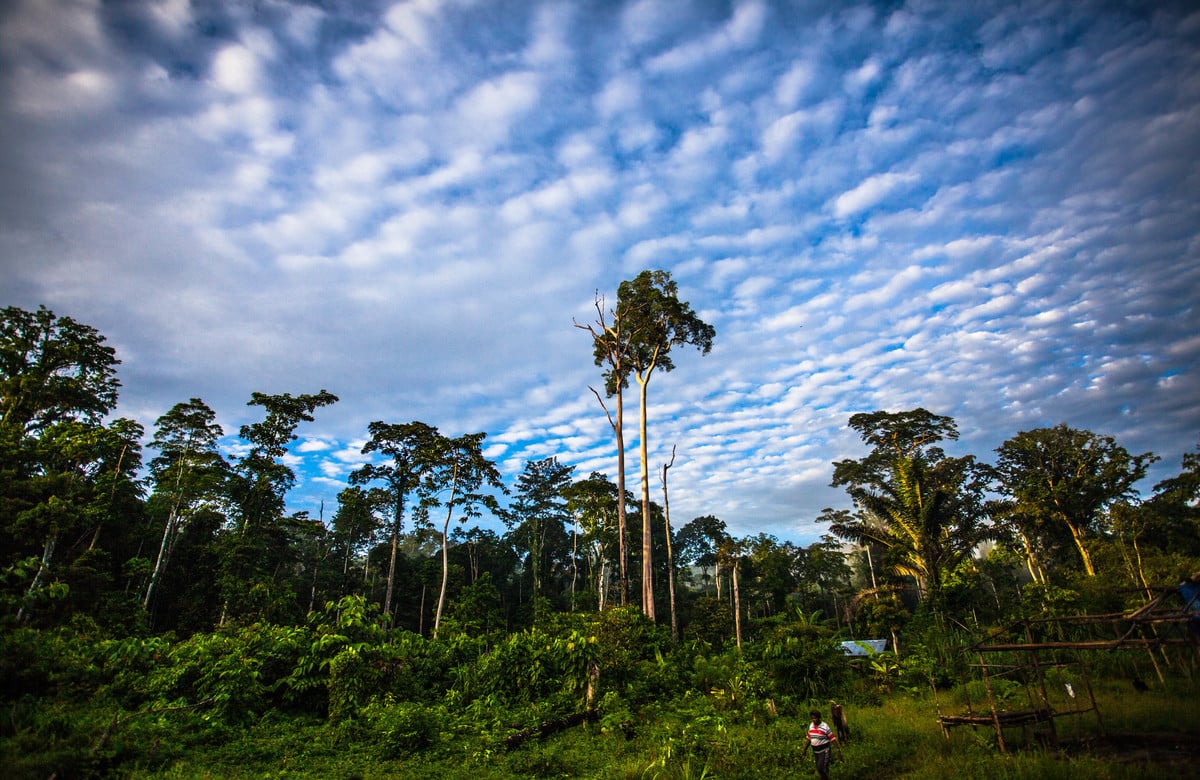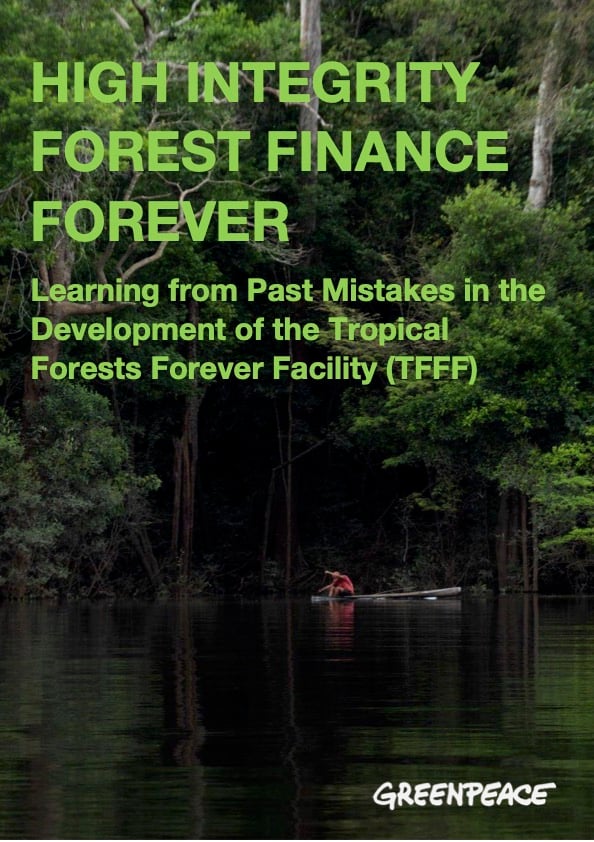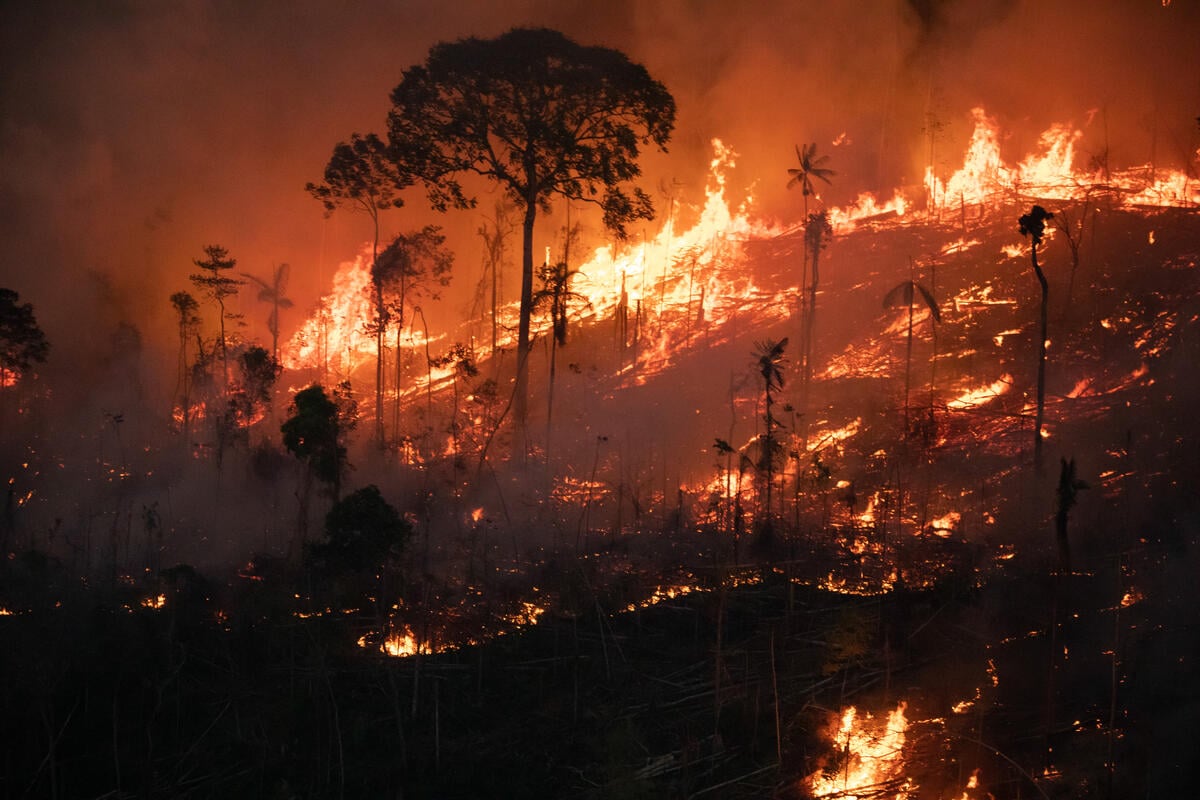The Amazon rainforest is shrinking. The fires in the Amazon are growing.
Just six weeks before the crucial 2022 Brazilian presidential election, a historic day of Amazon burning was detected by satellite monitoring. On 22 August, 3,358 fires were detected in the Brazilian Amazon, according to the Brazilian space agency, INPE. This was the highest number of fires recorded for any 24-hour period since 2007.
That alarming day of fire was no anomaly, but simply another day in a tragic trend of destruction in the Amazon rainforest since Jair Bolsonaro became president of Brazil in 2019. Just in the month of August 2022, there were 33,116 illegal fire hotspots registered in the Amazon, the highest level in 12 years.
The world must do more than watch in horror as the world’s largest intact forest is being pushed toward a climate tipping point. Despite its greenwashing claims, the anti-environment agenda of Bolsonaro’s government has catalyzed historic burning and deforestation by emboldening land grabbers and dismantling the agencies responsible for environmental protection.
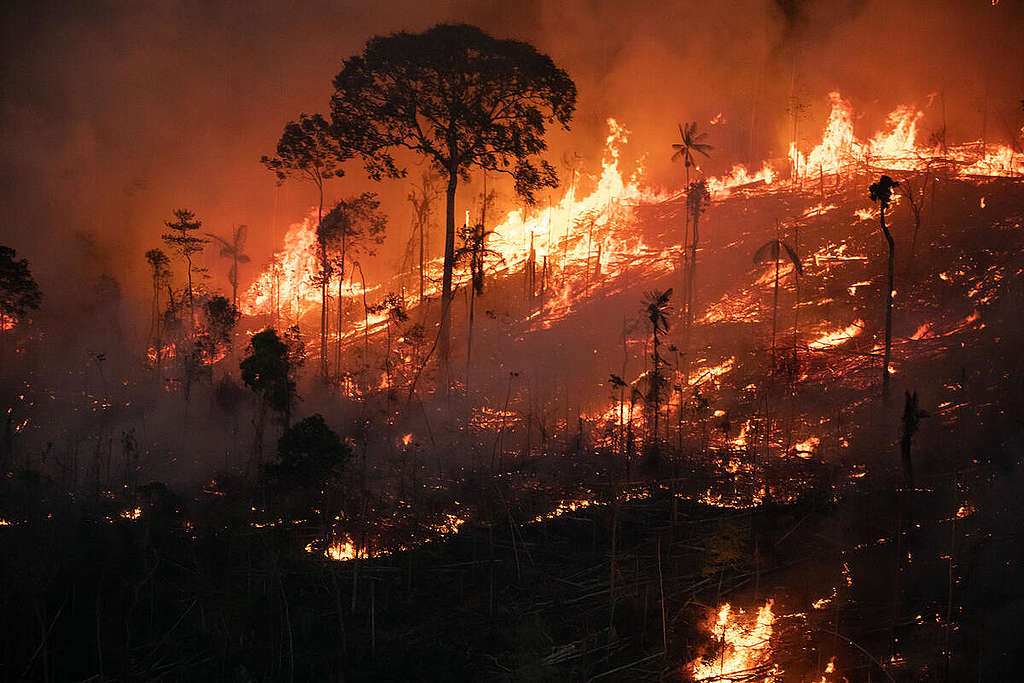
The rainforest, the Indigenous and traditional communities who call it home, the unparalleled biodiversity of the region, and the global climate need real, sustainable solutions. Around the world, we must work together in whatever ways we can to stand with the Guardians of The Forest and to protect the Amazon from those who value profits over people and the planet.
Let’s start building our people power by getting familiar with the basics facts about the burning of the Amazon rainforest, the root causes, and the consequences for us all.
Are fires in the Amazon naturally occurring?
No! It’s important to understand that fires are not a natural phenomenon in the Amazon rainforest. The fires generating headlines around the world for the last several years are ignited by people. Generally, untouched moist rainforests do not burn.
Unlike the wildfires experienced in places like California or the Mediterranean that can be naturally occurring or ignited by accident, the fires in the Amazon are often ignited intentionally.
Why are people starting fires in the Amazon on purpose?
The fires in the Amazon are often started intentionally. Many of those starting fires are illegal land grabbers emboldened by the anti-environment policies of Bolsonaro’s government. They are burning forests to clear land for other uses, such as cattle ranching, growing animal feed, or illegal logging.
This process of destroying trees to clear forested land is known as deforestation.
Deforestation and fires are linked. They are intertwined threats to the lives and livelihoods of Indigenous Peoples and traditional communities in the Amazon, to the biodiversity of the forest, and to the global climate. The widespread forest burnings associated with deforestation are carried out by those who put short-term profits over people and the planet.
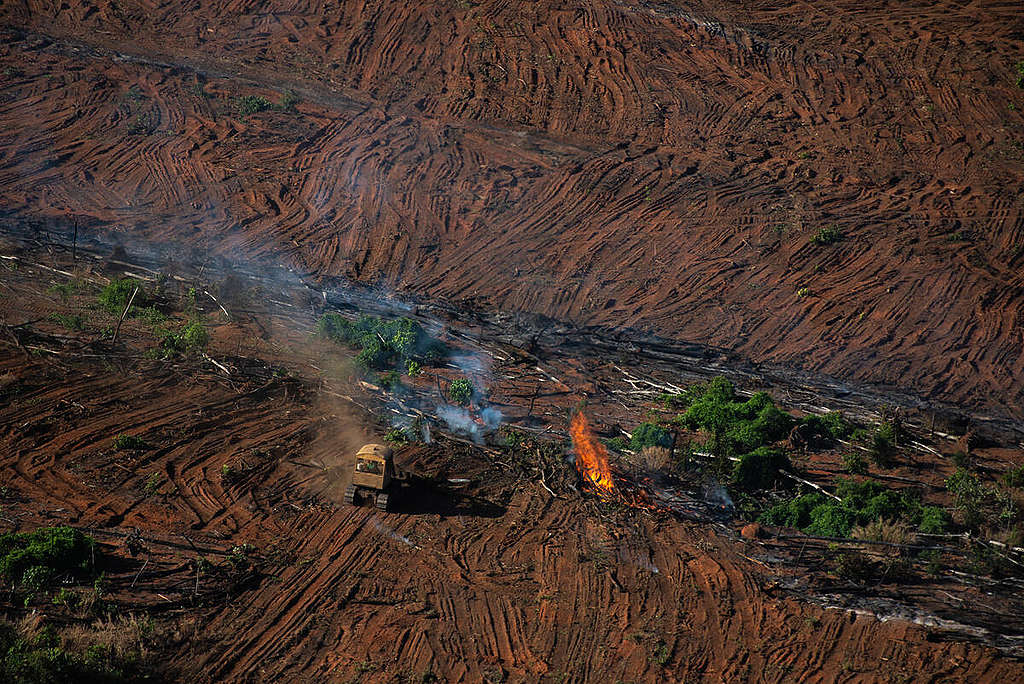
While Indigenous Peoples and traditional communities have understood responsible uses of fire in land stewardship for generations, the fires generating global headlines in the Amazon are often ignited by those people who do not care about the long-term health of the ecosystem or the communities who live there.
Why is the Amazon being burned and deforested?
The primary drivers of deforestation in the Amazon — and other biomes in Brazil such as the Pantanal and the Cerrado — are agribusiness and meat consumption. This destructive economic development model has long been practiced in the Amazon, but it has been reinforced by the Bolsonaro government.
A survey released by the Amazon Environmental Research Institute (IPAM) in October 2021 showed that cattle pastures occupied 75% of the deforested area on public lands in the Amazon. Other causes of deforestation include the construction of new highways, logging roads, dams, and mines.
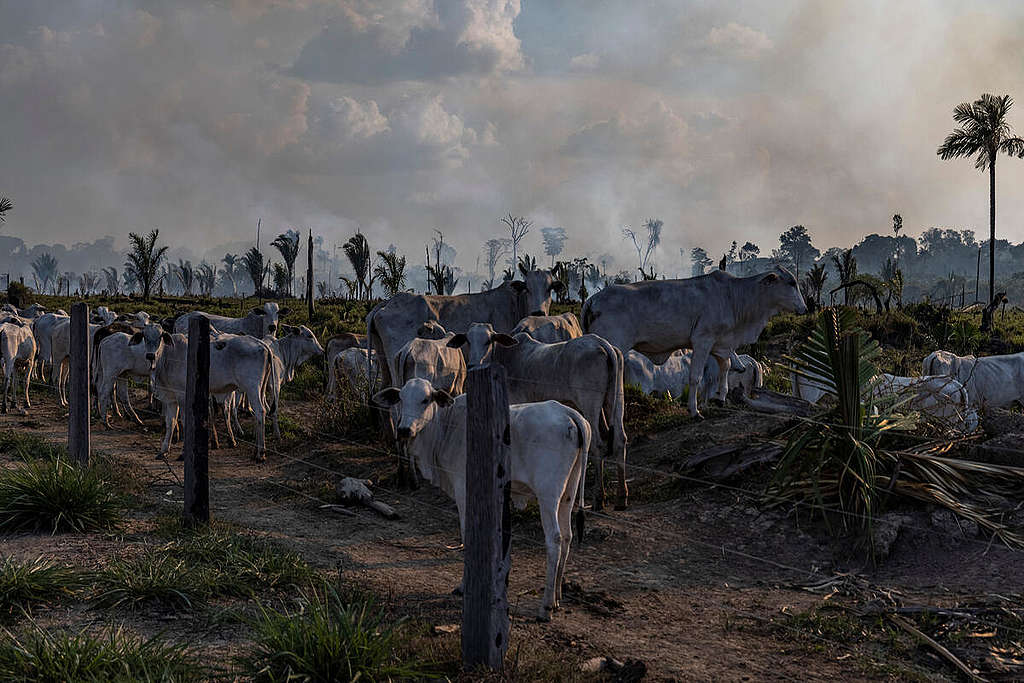
Where are the fires in the Amazon?
The world’s largest intact forest, the Amazon rainforest covers 2.6 million square miles across nine countries in South America: Brazil, Bolivia, Peru, Colombia, Ecuador, Venezuela, Guyana, Suriname, and French Guiana. Approximately 60 percent of the Amazon Basin is in Brazil, where Greenpeace Brazil has been working for 30 years to protect it.
In the Brazilian Amazon, the states of Amazonas, Acre, and Rondônia — collectively known as the AMACRO region — have suffered sizable fires and deforestation in recent years. Not only does the southern region of the Amazon known as AMACRO hold vast and still underexplored biodiversity, it is also the gateway to one of the most well-preserved parts of the largest tropical forest in the world. In this crucial region, greedy agribusiness interests are behind an advancing front of deforestation and related burning.
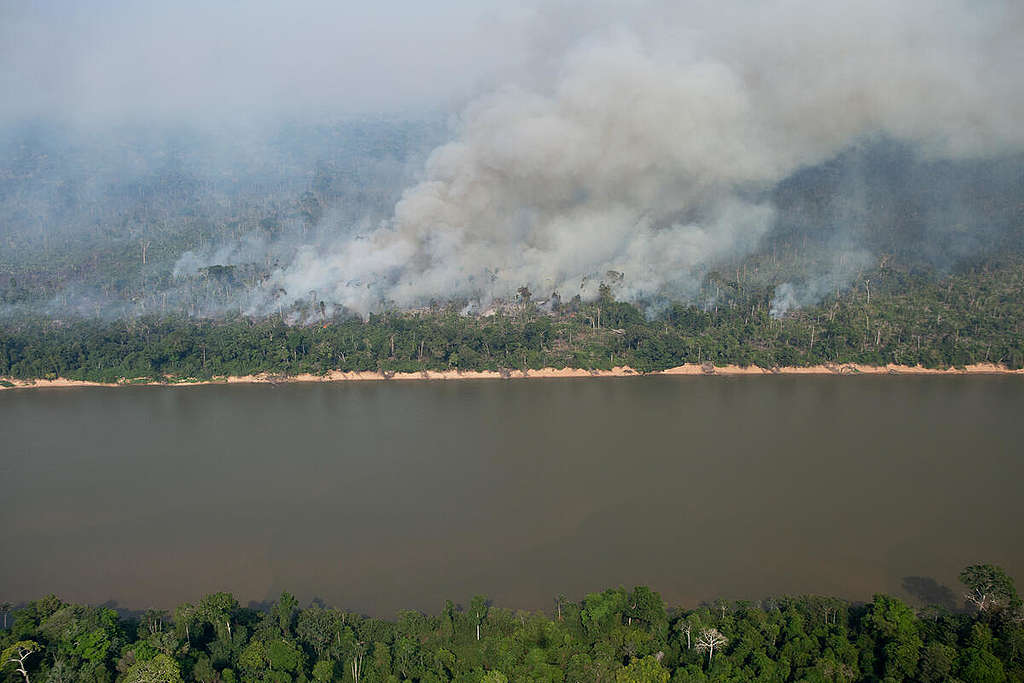
According to data from the Brazilian National Space and Research Institute (INPE), there was a 16.7% increase in fire hotspots in the Amazon from January through August 2022 compared to the same time period the previous year. Forty-three percent of those hotspots were identified in only 10 municipalities, five of them located in the AMACRO region.
Is it even legal to start fires in the Amazon?
No! This is against the law! Even if one has a vegetation clearing permit (i.e., an authorization for deforestation), the use of fire is not allowed by Brazilian law for that purpose.
Moreover, these are illegal fires being started in the Amazon to clear land that is often stolen either from the Brazilian public or from Indigenous Peoples are traditional communities. This illegally seized and illegally burned forest is often cleared to create more cattle pasture and animal feed for the global meat industry.
Of course, laws against burning are only impactful if they’re enforced.
In Bolsonaro’s Brazil, this criminal activity is rewarded by climate-wrecking Brazilian politicians, candidates as well as major banks and buyers of animal feed or beef around the world who continue to look the other way.
How has the Bolsonaro government made it easier to get away with illegal burning and land grabbing?
The undeniable and devastating surge in fires and deforestation in the Amazon is a result of the Bolsonaro administration’s anti-environmental agenda. One of the ways in which the Bolsonaro government has made it easier for illegal land grabbers to break environmental law is by taking money away from agencies responsible for enforcement.
In 2021, the Brazilian government budget for the environment was the lowest in 21 years, as shown in a report by the Brazilian Climate Observatory.
Don’t be distracted by the Bolsonaro government’s greenwashing or grandstanding but toothless decrees: The area deforested each year in the Amazon increased by 52.9% in the first three years of the Bolsonaro administration (average of 11,405 km² between 2019 and 2021) compared to the previous three-year average (average of 7,458 km² between 2016 and 2018).
This uptick in deforestation has been accompanied by increases in fires recorded: From January to August 2022, there was a 16.7% increase in fire hotspots in the Amazon compared to the same time period in 2021 – the highest rate since 2019.
The numbers don’t lie.
When is the burning season in the Amazon?
The land grabbers and deforesters who are illegally starting fires in the Amazon tend to sync up with the natural dry season in the region which extends from July through November. Unfortunately, due to intentionally diminished enforcement of environmental laws under Bolsonaro as well as increasingly dry conditions due to the climate crisis, there are fires in the Amazon all year round now.
Is the Amazon still burning?
Sadly, it is increasingly likely that fires are burning in the Amazon at any time of the year, even outside of the dry season. To stay up to date with recent data on deforestation and fires, make sure that you follow Greenpeace Brazil.
A key source of data on fire hotspots is the Brazilian National Space and Research Institute (INPE). In addition to monthly reports on the number of fire hotspots — any area with recorded temperatures above 47°C — INPE also produces the PRODES and DETER deforestation monitoring that is integral to tracking the rate of destruction in the rainforest.
With more than 30 years of experience working in the Amazon, Greenpeace Brazil closely monitors and shares the most recent data on deforestation and fires. Furthermore, Greenpeace Brazil conducts flyovers of fires and deforested areas in the Amazon in order to chronicle the destruction and ensure it is seen throughout the world.
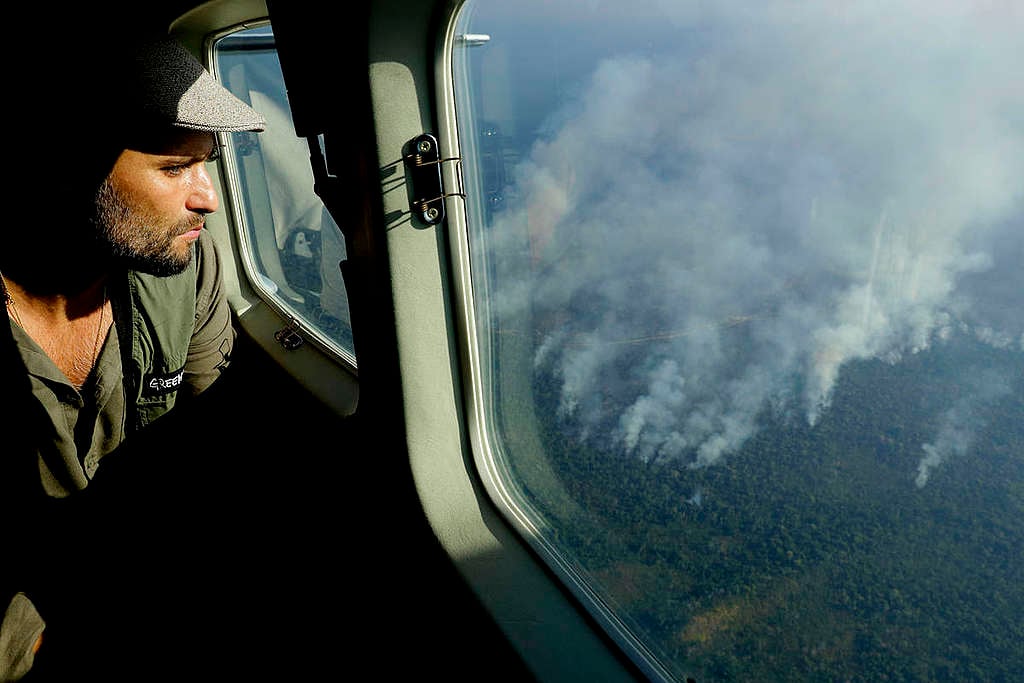
How do fire and deforestation impact the global climate?
The rampant destruction of the Amazon is pushing the rainforest toward a climate tipping point of no return.
In the last 40 years, the Amazon has already had approximately 17% of its total area deforested, according to Brazil’s National Institute for Space Research (INPE). Scientists have warned that further deforestation could push the Amazon rainforest beyond a tipping point where the moisture and carbon balance of much of the Amazon biome would become broken.
According to some studies, this tipping point would be reached when 20% to 25% of the forested area is lost to deforestation. Beyond this tipping point, the Amazon could effectively fail as a rainforest and begin to become a much dryer ecosystem, similar to a savannah.
The Amazon rainforest is vital to the planet’s climate, playing a role in regulating or balancing regional and global climate and bringing rain to distant regions. Moreover, the Amazon also stores large amounts of carbon. When the forest is cut down or burnt down, the carbon is released into the atmosphere, contributing to global warming.
Allowing the Amazon to reach such a tipping point would bring disastrous consequences for the climate, people, and biodiversity.
What are the impacts of fires in communities in the Amazon?
Some of the first images to garner international attention for the Amazon fires of 2019 were those of smoke-filled skies in Brazilian cities like Sao Paulo, far from the forest.
The health impacts of the toxic smoke from the Amazon fires on local populations are another tragic aspect of forest destruction. Not only do those who live closest to the fires have their homes and livelihoods jeopardized by burning and deforestation but they also face grave health impacts due to smoke inhalation, a danger only exacerbated by the global Covid-19 pandemic.
The reckless burning of the Amazon can have a global impact, but it’s important never to forget the severe consequences faced by those closest to the forest.
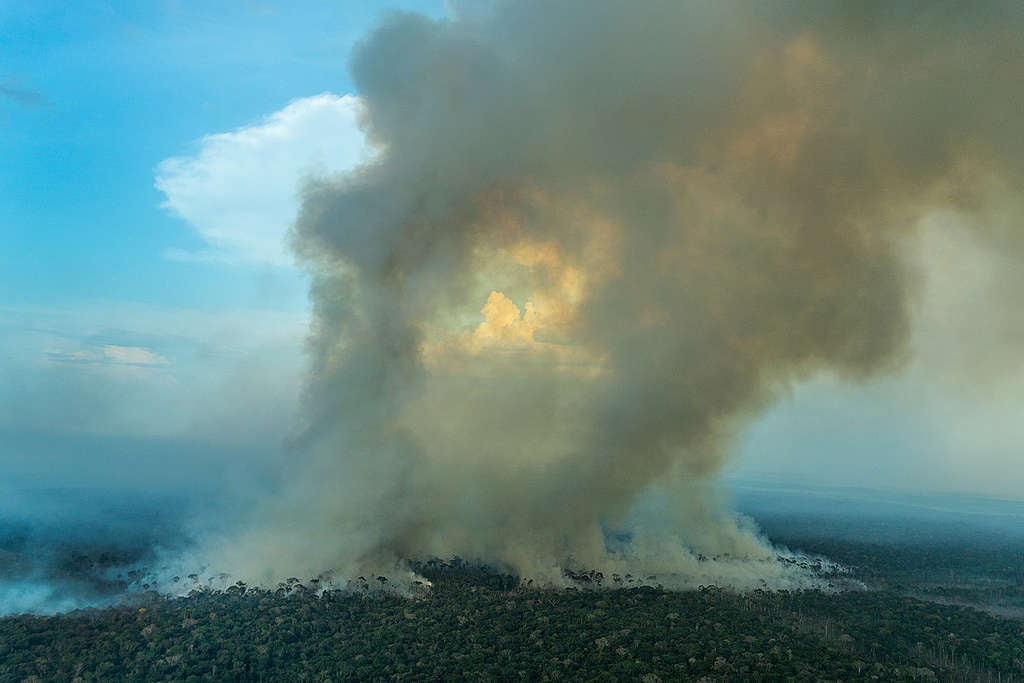
How can we actually fight fires in the Amazon?
The key to fighting fires in the Amazon is preventing them from being started in the first place.
Once the burning has started, the challenges of combating active fires in the vast rainforest are extremely high. Fire-fighting techniques that may work in other contexts such as creating fire breaks or dousing flames from above with planes become logistically complex or cost prohibitive given the scale and remoteness of the Amazon.
The difficulties in combating already raging fires combined with the unpleasant reality that these are man-made disasters underscores the necessity of preventing fires before they ignite.
Stopping intentionally ignited fires in the Amazon means stopping deforestation.
How do we stop the deforestation driving fires in the Amazon?
In order to combat fires, deforestation and the rapid loss of biodiversity caused by forest destruction, there are a few actions the Brazilian government must take:
- Reverse the dismantling of environmental law enforcement that has occurred in recent years.
- Use the effective tools it already has available for forest protection. Data indicates that legally designated “Protected Areas” are an effective tool to prevent deforestation in Brazil. The government can create these legal conservation units by designating the public land it already holds.
- Recognize Indigenous Lands as well as the rights of traditional communities and quilombola territories. Unfortunately, under Bolsonaro, the Brazilian national congress has been considering legislation like Marco Temporal that benefit land grabbers and threaten to wipe Indigenous communities off the map.
In addition to these clear steps to be taken within Brazil, all together around the world we must fix our broken food system if we hope to end Amazon fires and deforestation.
Industrial agriculture is the biggest driver of deforestation in the world. In Brazil, cattle ranchers and land-grabbers set the Amazon on fire to illegally clear land and expand their destructive business. They do this because the global meat industry — and its paying customers — have historically been willing to sacrifice forests — and our futures — for profits.
Stand with Indigenous Peoples and local environmental organizations!
The battle against reckless fires and runaway deforestation in the Amazon rainforest is one we must win. And there’s only one way to win it: Together.
Wherever you are, you can educate yourself and support Indigenous Peoples and environmental organizations advocating for forests. Greenpeace Brazil has three decades of experience working to protect the Amazon and has the support of a global network of Greenpeace organizations, many also pressuring leaders and companies in their local regions to stop encouraging deforestation and the accompanying burning through climate-wrecking business practices and trade deals.
But there are many other groups and organizations working at the intersection of the Indigenous rights and climate movements who also need support, such as Articulação dos Povos Indígenas do Brasil (APIB), Amazon Watch, Instituto Socio Ambiental, and CIMI.
Protecting the rights of Indigenous Peoples and traditional communities along with their lands means protecting everyone’s future. We all need a future that includes a healthy, thriving Amazon rainforest.

